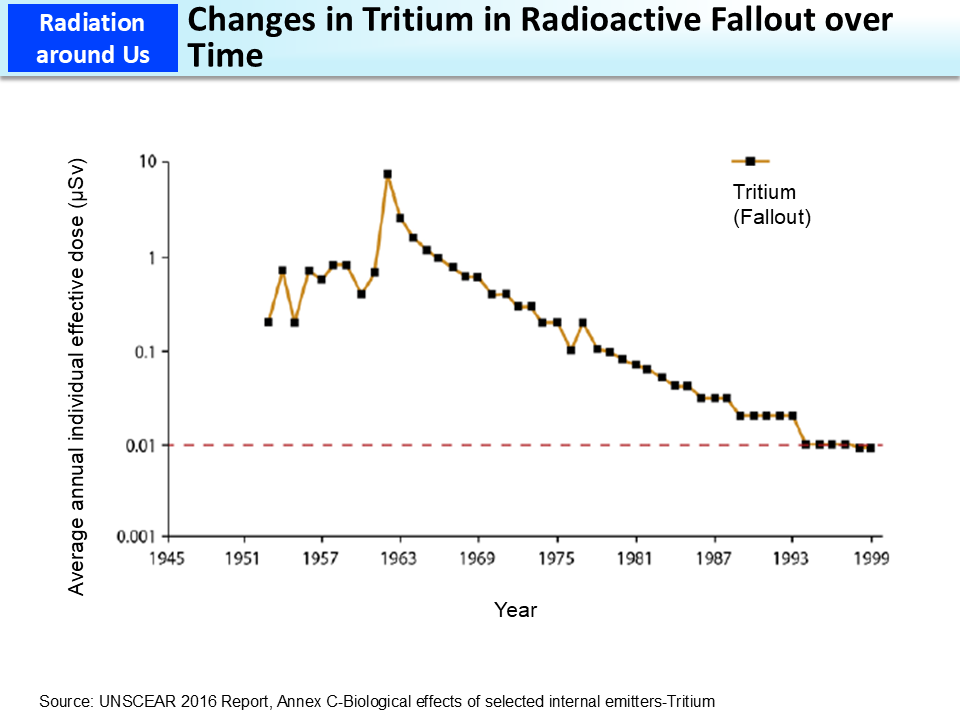Changes in Tritium in Radioactive Fallout over Time
During the period from 1950 to 1963, nuclear weapon tests were conducted and caused a large amount of radioactive fallout across the globe. As a result, the average annual individual doses from tritium increased with the peak value of 7.2 μSv in 1962. After that, the amount of tritium decreased with the half-life, which resulted in little effect on the individual dose. In 1999, it became 0.01 μSv, which was about one-seven hundredth of the peak value.
In the nuclear testing, not only tritium but also cesium, plutonium and strontium were released into the environment.
According to the 2016 report by the United Nations Scientific Committee on the Effects of Atomic Radiation (UNSCEAR), the epidemiological studies conducted so far have not confirmed any tritium-specific risk about the effects of public exposure to tritium. Additionally, from the fact that the incidence of childhood leukemia has not increased since the early 1960s when nuclear tests were frequently conducted, it is considered that there is a low possibility that the health risk by exposure to tritium is underestimated.
(Related page: p.78 of Vol. 1, “Effects of Radioactive Fallout due to Atmospheric Nuclear Testing”)
- Included in this reference material on March 31, 2021

